Caroline Turner (b. 1993) currently lives and works in Eugene, OR where she is a Graduate Teaching Fellow at the University of Oregon School of Art and Design. She received her Bachelor of Fine Arts in interdisciplinary studies and a certificate in Critical Visions from the University of Cincinnati in 2015. Her work spans a wide variety of media, centering on the intersection of technology, culture, and the human condition. Turner highlights underlying information that problematizes or alters how we situate ourselves in reality. In addition to her studio practice, Turner co-founded IRL Gallery in 2016 with Ian Anderson, an exhibition space that blurs the line between seeing art in real life and viewing documentation online.
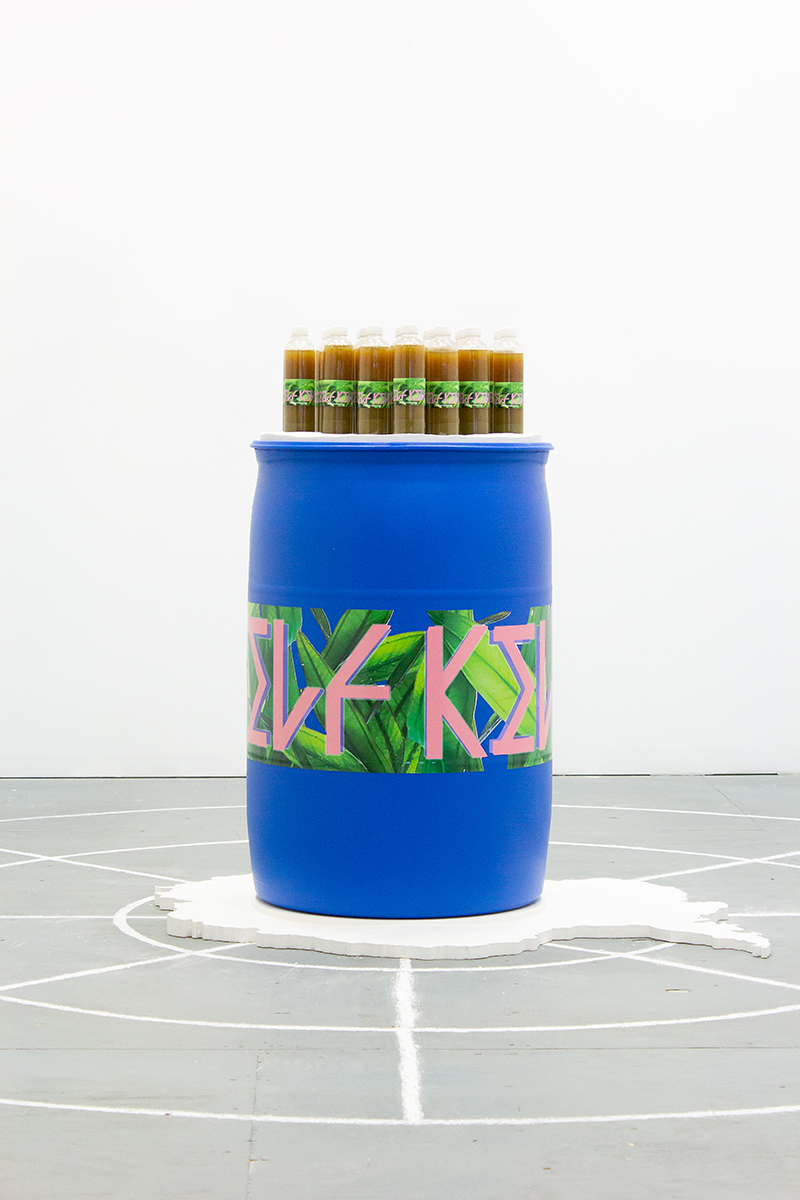


Solarsteading in Marielandia
Solarsteading in Marielandia is a speculative post-collapse world-build taking place in the 2080’s in the bustling urban metropolis of Marielandia, West Antarctica. The installation is comprised of artifacts from the SIM universe, as well as excerpts from a screenplay of the same name that features two female protagonists on their way to Marielandia from Detroit as the Midwest is being rewilded. This work offers a glimpse into one possible near-future geopolitical scenario; wherein hemispheric stacks have become increasingly polarized, advertising reflects a new widespread solarpunk ethos, and humans occupy an era of degrowth in a post-scarcity world.


Kyra Schmidt: Before we begin talking specifically about your work and recent exhibition, Solarsteading in Marielandia, I’m curious to know how you view/interpret photography in the modern world – as an artist creating digital landscape/products with a focus on new media and installation?
Caroline Turner: This has always been a complicated question for me – my relationship with photography – because though my work is very image-based, it doesn’t attempt to respond to any specific discourses of photography, or fit neatly within the medium. In my work I try to cultivate broad contexts and create speculative scenarios that have never, or don’t yet exist in real life. In Solarsteading in Marielandia, I could never possibly predict the actual material reality of the 2080’s, but using images and models I try to build a brand and a headspace surrounding the ideas in the work.
Kyra Schmidt: I’ve been refreshing myself this past week with the language of climate change, specifically looking at T.J Demos’ book “Against the Anthropocene”. I couldn’t help but compare the terms degrowth and rewilding (introduced in your screenplay) to eco-Soterianism – the idea of fixing ourselves to fix the earth. I think I found some of these values in Petra and Sif, but also a sort-of sarcastic jab at unbridled global capitalism such as with the SELF-KELP.
To get more to the point, what issues are you hoping to bright to light? Where did inspiration for the images/products/ideas originate?
Caroline Turner: I love that you picked up on the “sarcastic jab” at global capitalism in the screenplay because when dealing with topics as large, abstract, and hyperobjective as capitalism and the climate catastrophe, it’s essential for me to occupy a meta-cognitive distance between myself and the ideas that I’m engaging. I’m a very sarcastic person and this naturally comes through in my work, much more vividly in writing. While I haven’t read this specific book from Demos, I did recently attend a lecture he gave at the University of Oregon (where I’m working on my MFA). He essentially contextualized the acceleration of climate change within the production of petrochemicals such as tear gas to touch on the violence embedded in contemporary society. Much of the discourse surrounding this topic though is hinged on an extremely neoliberal mindset, that individual consumer choices have the potential to generate the necessary change to begin to thwart some of the worst environmental effects that have been seen and theorized. In Demos’ talk, he brought up the phenomenon of Greta Thunberg and her seemingly good-faith agenda to confront the individuals and institutions that are responsible for global warming. However, it appears that the ruling class is actually using Thunberg to hijack what could otherwise be a radical movement that directly threatens their power, resulting in her ‘platforming’ by every major liberal institution and the media. In the screenplay, Greta Thunberg is the “supreme leader” of Marielandia, which is definitely meant to be a humorous take on political and cultural systems themselves collapsing toward increasingly radical beliefs and positions on climate.
To answer your questions specifically, I’m attempting to complicate the discourse surrounding notions of collapse within the climate catastrophe through a speculative future scenario in which the crisis has been ‘solved’ yet the repercussions are felt and embodied in various ways. A ‘collapse’ is not a singular event, but an unevenly distributed set of occurrences that will play out on multiple timescales; in Solarsteading in Marielandia I’m trying to follow one of these collapse scenarios through Sif and Petra relocating from Detroit, Michigan to Marielania, West Antarctica. In the work, I have created multiple brands and headspaces to articulate these ideas. The brands serve as both an interface and an environment. SELF-KELP is simultaneously a literal product that the characters consume and interact with, but it also points to the environment of the 2080’s: one filled with an abundance of kelp as sea levels have risen, algae-derived biofuels have entered everyday life, and superfoods like kelp are used in utilitarian wellness initiatives to feed the massive global population.
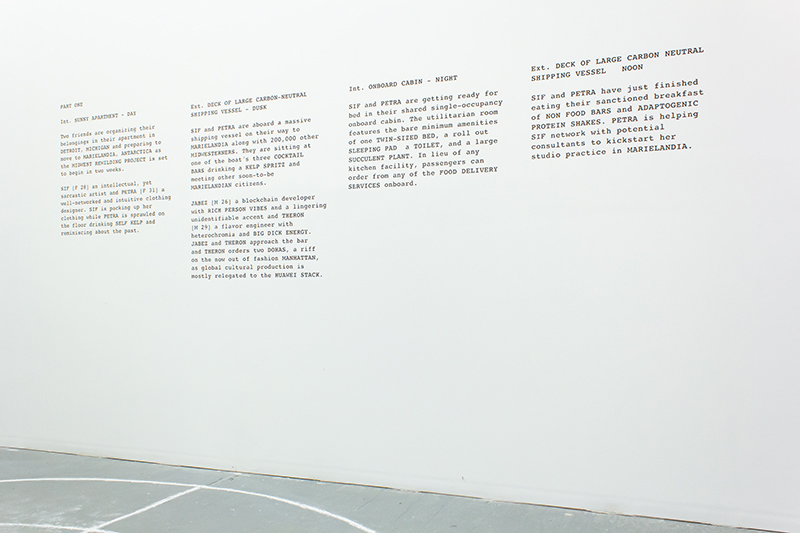
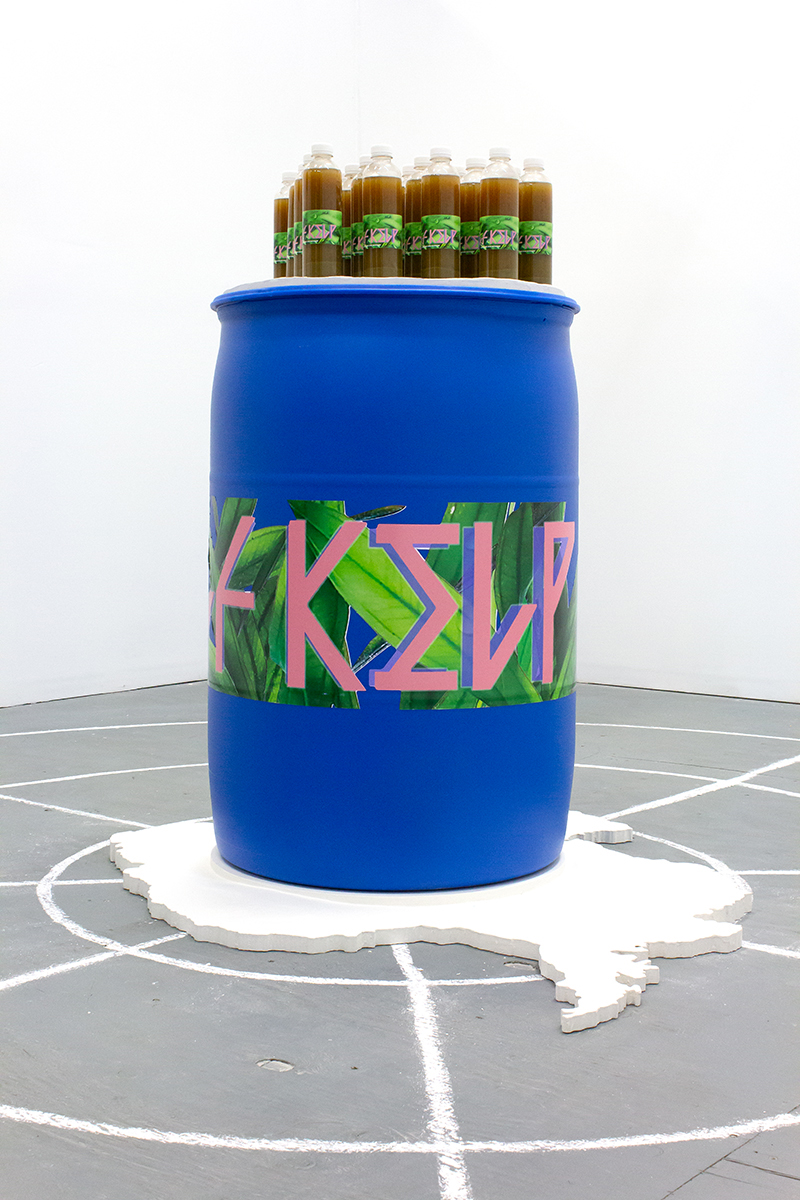

Kyra Schmidt: As I read and reread this, your aforenoted notion of a collapse as an unevenly distributed set of occurrences is sticking with me. As I am sure you know, a major problem with the Anthropocene concept is the way in which it universalizes the roots of the eco-crisis by situating it among humanity in general.
By cultivating broad contexts, it seems to me as if you are trying to emphasize the subjectivity of the individual. There’s a similarity in the form and content of your work to the way the climate catastrophe can rarely speak directly to the issue, despite our desire to articulate and streamline it. Though imagined through multiple media, the repetitious serial form of this series (and its installation) speaks to this complicated dialogue while simultaneously placing it with each respective viewer. Both re-presenting reality and accusing it.
Maybe I am off point here… Can you speak to your work’s linking of fact and faction, and how they may interrelate for both individuals and larger social formations? Is there a space or a reach for your work that feels gratifying? I personally find Art’s relation to praxis often indirect and frustrating.
Caroline Turner: I came upon this article a few months ago that hypothesizes the new gods of the post-truth climate era based on deities and phenomena mostly from ancient history. The one that stuck out to me the most was the metaphor of Moloch – the god of human coordination failure – that hinders any meaningful human collaboration at the planetary scale to prevent or mitigate something as borderless and unknowable in its totality as climate change. The linking or blurring of fact and fiction is something deeply rooted in our evolutionary history, as we’ve always believed in gods, myths, countries, and corporations that only exist in the intersubjective realm. I’ve approached the last few projects that I’ve worked on from the perspective that perhaps there’s a crisis in the beliefs that dictate the way we situate ourselves in reality at certain scales. In this body of work the technological accelerationist and utopian perspective is supposed to come across as vapid and absurd, hopefully pointing to the unsustainability of this belief system that we presently embody.
Going forward I want the work to exist in different scopes and contexts. I’m currently at the Aldea residency in Bergen, Norway looking through a window out at the Bryggen harbour filled with massive ships that assist oil rigs in a country that is otherwise extremely tuned into sustainability and its own carbon footprint. This irony and friction is definitely the starting place for new work within the headspace I’ve been embodying in Solarsteading in Marielandia.
Kyra Schmidt: I have to say I’ve never conceptualized the grand scheme of things in this light before, but I find the ideas you present to be incredibly compelling. Can you define “Solarsteading” for us?
Caroline Turner: I’m so glad you asked this because I figured someone would have by now! In my practice I often produce work within a speculative past or future scenario as a way to extrapolate certain tendencies and logical proliferations of the present. Therefore I am always trying to create interesting neologisms that point to something specific, but perhaps take us out of our own timescale somewhat. “Solarsteading” is inspired by the Tumblr formula for subculture creation, i.e., add “core,” “punk,” “wave”, or in my work, “stead” to the end of a word. In 2008, technology entrepreneur and venture capitalist, Peter Thiel founded the Seasteading Institute, itself a neologism combining “seafaring” and “homesteading,” that aimed to build libertarian-minded extrastatecraft permanent human settlements at sea. The Solarsteading in Marielandia universe is one roughly sixty years in the future wherein a Silicon Valley corporate culture takeover has eclipsed all liberal institutions and governments in favor of a wellness theocracy, carbon-counting autocratic political structure. “Solarsteading” is my way of occupying the same headscape as Thiel’s seemingly utopian Seasteading Institute, but applying it to something as banal and ordinary as living on land.
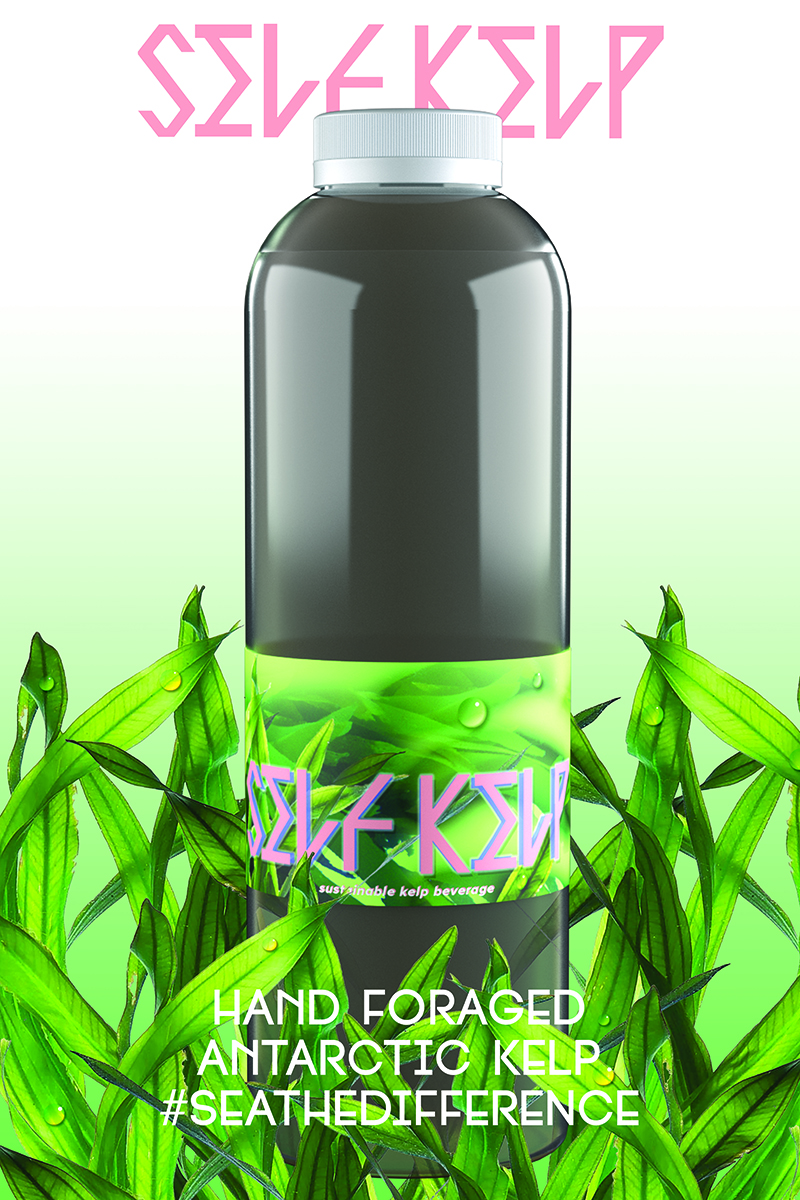
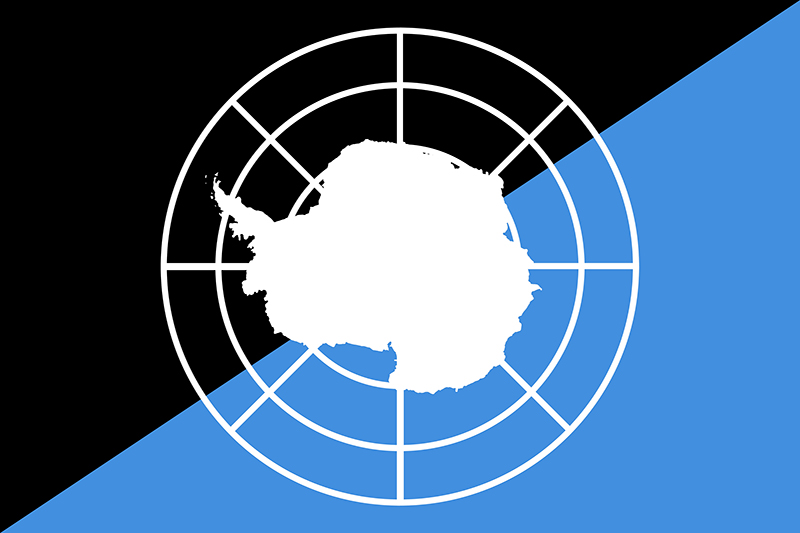
Kyra Schmidt: On this topic, I am intrigued by the way image and text overlap within your work from title to image to written dialogue. It seems that the language is used to both direct and undermine meaning. How do you contextualize this overlap between perception, meaning, imagination and authority?
What draws you toward these speculative past/future narratives?
Caroline Turner: I think there’s an argument to be made for bearing witness to the present and our time as it exists now, but I’m interested in using a more complicated lens. The format of speculative fiction, particularly one of a non-linear past/future timeline, provides a way of commenting on the present without being overly didactic or internalizing dominant forms of seeing. The way I structured the exhibition of Solarsteading in Marielandia, as a display of physical artifacts from the screenplay, was aimed at blurring some of these ideas you’ve brought up – perception, meaning, etc. I find this process extremely compelling in other industries and media, so it’s something I try to emulate in my own practice.
Kyra Schmidt: Is there more to come from “Solarsteading in Marielandia”? Can you tell us what is in the works right now at your residency?
Caroline Turner: Absolutely! I’m continuing to finish and revise the screenplay aspect of the work and that will inevitably lead to new physical pieces and installations. I’m really excited to be in Bergen for the month doing the residency not only because it’s beautiful here, but also because Antarctica is projected to have the climate of modern-day Scandinavia by the 2080’s so it’s a perfect setting for the work. At Aldea they have incredible wood, metal, and digital fabrication workshops so it opens up a lot of possibilities for new output to be materialized. There are two other artists here for the residency as well and we will have a group show at the gallery on February 14th that I’m really excited for!

To view more of Caroline Turner’s work please visit her website.